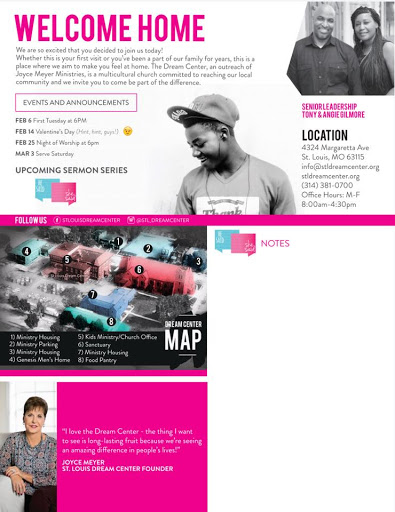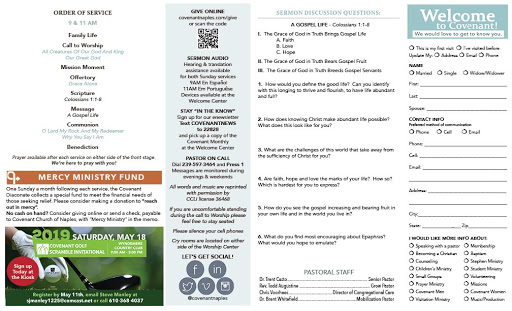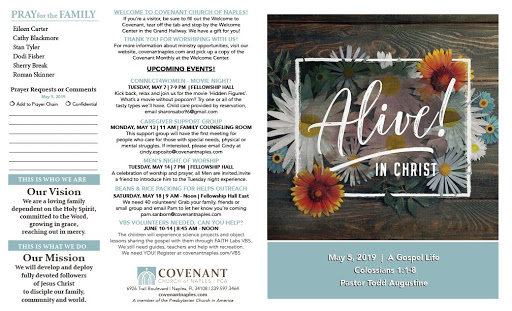Whether your church is traditional and has been around for years, or you are a new, modern church, chances are you’ve come across the bulletin/worship guide dilemma. When it comes to church communications, it seems like the bulletin can be a source of tension and an area of frustration. What should it look like? Digital, print, or both? How do you control the content that is in it? Unfortunately, there’s not a one-size-fits-all solution, but there are best practices you can put in place to make sure your bulletin is helpful, informative, appealing and best of all, not a source of frustration.
Remember, the primary purpose of a bulletin is to keep your congregation engaged and informed, so use that as a measuring stick as you work to create or recreate your bulletin. Here are a few worship guide best practices.
Worship Guide Styles
When it comes to the style of your bulletin, the possibilities are close to endless. However, best practice is less is more. If you try to fit everything possible on your worship guide, it becomes cluttered and confusing. At this point, additional information does more harm than good. Here are a few different examples and styles to consider as you redesign your bulletin.
One-Page Handout
We love this example from the St. Louis Dream Center. They’ve used one-page front and back to establish their branding, list events, announcements, sermon series, leadership info, a map, and still leave room for sermon notes.
Bi-Fold
The Covenant Church of Naples uses a bi-fold on an 8.5×14 paper with a perforation for the guest card. This is a great option for churches who need to share a little more info. The guest card tear-off also ensures that every person who gets a bulletin will have the option to leave contact information.
Tri-Fold
Waypoint church creates a tri-fold bulletin with ad space in the middle that changes week to week, a cover that changes with the sermon series, and a perforated guest card. This is a great example of a way that a more traditional style bulletin can look modern and up-to-date.
Digital vs. Print
The next common question when it comes to church bulletins is digital vs. print. Again, there is no right or wrong answer, but it is best practice to examine the way your church receives and engages with information, and follow suit. For example, if your congregation is made up primarily of millennials who receive information online, digital may be the way to go. Whereas, if your congregation has a lot of baby boomers who prefer a hard copy, make sure to offer a printed piece. Some churches choose to offer both by uploading a pdf of their bulletin to their church website weekly.
Here are a few pros and cons of each.
Digital Bulletins
Digital bulletins are a great option if you are on a tight budget or looking for something that can easily be shared online. Remember, like with a printed piece, it’s important that your digital piece matches your church’s branding and has accurate information.
Here is a great example of a digital bulletin from Northwood Church.
Pros:
- Cost-efficient
- Easy to edit
- Shareable online
Cons:
- Requires internet and a mobile device to access
- Excludes those who aren’t tech-savvy
- Encourages people to be on their phones during service
Printed Bulletins
Printed bulletins are still a great way to keep your congregation informed and engaged. They often provide space for note-taking, list upcoming events, and even contain guest information cards helping your team with follow-up.
Pros:
- Easily distributed at church
- Provides note-taking space during the service
- Encourages people to engage where they are
Cons:
- Expensive
- Prone to typos
- Requires strict content deadlines
Bulletin Content Control
The final best practice to consider when perfecting your church’s bulletin is content control. How is your church going to manage what does and doesn’t get printed in the bulletin? What will your deadline be as a church communicator? This can get tricky fast!
However, when it comes to content, strict and established expectations are best practices. For example, if your staff knows that you only put events that affect more than 50 percent of the church in the bulletin and that you have to have all event information 48 hours before print day, then abiding by these rules will be easy. The best way to make sure this is understood at your church is to write down guidelines and create a communications request form.
Here are a few examples* of churches that have print/communication request forms:
- Agape House used a Wufoo form and require that all requests are submitted 2 weeks in advance.
- Brentwood United Methodist’s request forms live on their church website so they are easily accessible.
- FBC Tallahassee uses Formstack as an event request form and lists their deadlines and contact info clearly in the intro.
*Keep in mind that these are actual request forms. Please don’t submit requests to these churches.
Remember, when it comes to managing what is and what isn’t on your bulletin, consistency, and clarity from the beginning is key.
Next Steps
Bulletins are a great way to keep your congregation informed and engaged, however, if you follow the rule of 7, people need more places to hear important information. Your church website is a great place for this too. Learn how you can use Sharefaith to create an effective church website today.







